Scarlet Street

Brief Synopsis
Cast & Crew
Fritz Lang
Edward G. Robinson
Joan Bennett
Dan Duryea
Margaret Lindsay
Rosalind Ivan
Film Details
Technical Specs

Synopsis
At a dinner celebrating twenty-five years of employment, cashier Christopher Cross is awarded an engraved watch by his boss, J. J. Hogarth, who later leaves the party with a stunning blonde, which impresses Chris. Walking home, Chris breaks up a violent quarrel between a man and a woman and, after the man flees, offers to escort the woman home. She introduces herself as Katherine "Kitty" March and asks Chris to buy her a drink first. Flattered and hoping to impress Kitty, Chris tells her that he is an artist and his modesty prompts her to suspect he is wealthy. The next day, Chris, who has been relegated by his shrewish wife Adele to practice his painting in the bathroom, grows depressed when she berates him for his lack of talent, and points out that her first husband died bravely as a detective. Frustrated, Chris sends Kitty a note asking to see her again. Kitty's idler boyfriend Johnny, the man who beat her, also believes Chris is rich and pressures Kitty to make a date with him. When they meet, Kitty claims she is an actress who finds it hard to make ends meet and asks Chris if she could pose for him, suggesting he rent a studio in which he could paint and she might live. When Chris admits he is married, Kitty feigns shock, but convinces him to rent the studio. Unsure how to provide the money for the studio, Chris considers stealing it from his employer, but asks Hogarth for a loan instead. Later at home, as Adele's nagging continues, Chris steals some of the security bonds left by her deceased first husband. Johnny helps Kitty select a lavish studio and demands she ask Chris for $1,000 more. When Chris unexpectedly visits the studio and finds Johnny with Kitty, she introduces him as a friend's boyfriend, but Chris's suspicions are aroused. Nevertheless, he brings several paintings to the studio and begins painting a portrait of Kitty. Later, Chris hesitates to provide Kitty with more money, but when she threatens to ask Johnny, Chris assures her he will get it for her and in desperation, begins stealing at work. Johnny, certain Chris is a famous artist, takes some of his paintings to a street vendor, who assesses them as amateurish, but offers to try and sell them. The next day, the vendor brings art critic Arthur Janeway to see Johnny, who tells him that Kitty did the paintings. Janeway declares the works highly original and when Kitty repeats some of Chris's phrases about art, the critic is impressed enough to offer to place the paintings with a prominent art dealer. Although Kitty is nervous, Johnny readily agrees. Sometime later, Adele spots the paintings with Kitty's signature in a dealer's window and accuses Chris of copying Kitty's work. Chris confronts Kitty about the paintings and she tearfully admits she had to sell them for money. Chris is pleased the paintings are selling and relieved to continue working in anonymity. At his office, a detective visits Chris, who fears his theft has been discovered, but the detective confesses to being Adele's first husband, Higgins. Higgins explains that he faked his own death and, now destitute, needs money to remain hidden. Chris, however, wants to pay Higgins to make a public return so he will be free of Adele. When Higgins hesitates, Chris tells him that Adele has the insurance money from his "death," which rightfully belongs to him. Chris arranges for Higgins to break in to the house that night to steal the insurance money, but traps him with Adele. Later, Chris visits Kitty and is dismayed to find her with Johnny. Overhearing Kitty declare her love for Johnny, Chris leaves, dejected. Kitty is relieved, but Johnny resents having lost their meal ticket and storms out. Chris returns, and although bewildered by Kitty's behavior, proposes. Kitty ridicules Chris's pathetic declaration and admits she has always loved Johnny. Outraged, Chris stabs Kitty to death with an icepick and slips away as Johnny comes back to the studio. The next day at work, an audit of the books reveals Chris's embezzlement. Hogarth is reluctant to prosecute and is sympathetic when Chris admits a woman was involved, but fires him. Johnny is arrested and tried for Kitty's murder, then is executed, while Chris remains silent. Guilt-ridden over the deaths of Kitty and Johnny, Chris attempts to hang himself, but is saved by neighbors. The haunted Chris takes to wandering the streets, trying to convince the police of his guilt, while the art gallery sells the "self portrait" of Kitty for an enormous fee.

Director

Fritz Lang
Cast

Edward G. Robinson
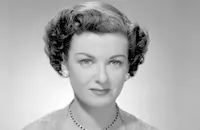
Joan Bennett
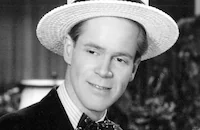
Dan Duryea

Margaret Lindsay

Rosalind Ivan
Jess Barker

Charles Kemper
Anita Bolster
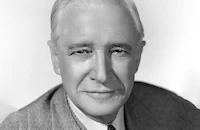
Samuel S. Hinds

Vladimir Sokoloff
Arthur Loft

Russell Hicks

Cyrus W. Kendall
Fred Essler
Edgar Dearing
Tom Dillon

Lee Phelps
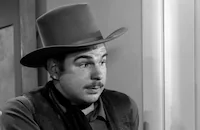
Matt Willis
Robert Malcolm
William Hall

Ralph Dunn
Chuck Hamilton
Gus Glassmire
Ralph Littlefield
Sherry Hall

Howard Mitchell
Jack Statham
Rodney Bell
Henri De Soto
Milton Kibbee
Tom Daly
George Meader
Lou Lubin
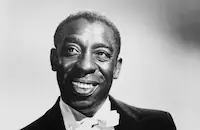
Clarence Muse
John Barton

Emmett Vogan
Horace Murphy

Will Wright
Joe Devlin
George Lloyd
Syd Saylor
Dewey Robinson
Herbert Heywood
Charles C. Wilson
Constance Purdy
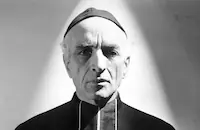
Fritz Leiber
Wally Scott
Arthur Gould-porter
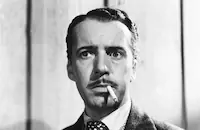
Boyd Irwin
Richard Abbott

Byron Foulger
Thomas Jackson
Edward Deane
Dick Wessel
Dick Curtis
Richard Cramer
Rev. Neal Dodd
Kerry Vaughn
Beatrice Roberts
Crew
Glenn E. Anderson
Travis Banton
Bernard B. Brown
Ernie Burnett
George A. Burnett
John Decker
Carmen Dirigo
John P. Fulton
Russell A. Gausman
Alexander Golitzen
Arthur Hilton
Milton Krasner
Fritz Lang
Carl Lawrence
Dudley Nichols
Jack P. Pierce
H. J. Salter
Melville Shyer

Photo Collections
Videos
Movie Clip




Hosted Intro



Film Details
Technical Specs

Articles
Scarlet Street
Throughout most of the '30s, she was a blonde. But by the time Lang filmed her, she had gone brunette. It was more than a superficial image makeover. In Man Hunt, she plays a Cockney prostitute who helps Walter Pidgeon elude Nazi pursuers. In the next two films, holding her own against Edward G. Robinson and Dan Duryea both times, she really hit her stride. In them, she's not only trouble, she's perhaps the only Hollywood leading lady who has a portrait painted of her in two consecutive films. In The Woman in the Window, Robinson's mild-mannered professor has the bad luck to meet the woman whose portrait catches his eye, only to find himself dragged into a quagmire of death and blackmail. In Scarlet Street (based on a French novel and play, La Chienne, by Georges de la Fouchardiere and Andre Mouezy-Eon, filmed in 1931 by Jean Renoir), Robinson's patsy is subjected to even more debasement, some self-inflicted. Bennett's thinly-veiled prostitute character, Kitty, memorably nicknamed Lazy Legs by Johnny (Duryea's vaguely pimpish boyfriend -- Hollywood's Production Code prevented specifying their occupations), has a masochistic side, too.
Ever since his first screen credit in The Little Foxes (1941), nobody slapped women around more nastily than Duryea. Not since Erich Von Stroheim was there a man movie audiences loved to hate more than Duryea's lanky sleaze, with his blond hair slicked back into a cobra hairstyle. But Bennett's Kitty finds his rough handling sexy. "If he were mean or vicious, or if he'd bawl me out or something, I'd like him better," she says, speaking to Duryea of Robinson's milquetoastish sap they mean to fleece. Robinson's squashed Chris Cross, a cashier who has just received a gold watch for 25 years of grateful on-the-job servility, isn't about to rough anybody up. At home, this gentle, sensitive man lives under the domineering thumb of his grating wife (Rosalind Ivan), who not only disparages his one escape from a world too harsh for him - Sunday painting - but complains about the modest amount of money he spends on art supplies and threatens to scrap his paintings.
Immediately after Chris "rescues" Kitty from a wee-hours altercation with Johnny under an el, a spectacular string of mistaken assumptions ensues. Because a tipsy Chris, on his way home from his 25-year-service party, is dressed in a tux, she thinks he's a rich swell. When he shyly tells her he's a painter, she and her boyfriend put two and two together and get $50,000 - the amount for which they think he sells his paintings. In no time, she sweet-talks him into setting her up in a Greenwich Village studio apartment (the Village's Carmine Street provided the film's title!). Passing Duryea off as the fiancée of her girlfriend (a simpatico Margaret Lindsay), she's unable to keep a straight face when the troubled Chris tells her he's a married man, and humiliates him by having him paint her toenails. The hopelessly smitten Chris lies, cheats, steals and connives to keep Kitty in his life until he can marry her. Greed and duplicity escalate to a death and a death sentence, with Chris devastated by guilt.
So noir, so good. There's more, though, partly derived from Lang's own youthful shortfall as an aspiring artist, although able to draw well enough to survive by selling cartoons and illustrations to pay bills during lean times. But Scarlet Street (and its screenplay by Dudley Nichols) has fun with the fatuities of the art world. It was an inspired choice to make real-life connoisseur and collector Robinson a truly mediocre amateur painter here, disparaging his own canvases. (Lang has him echo the same criticism applied to Lang himself years earlier, namely that he has no grasp of perspective.) Cruelly, we learn that the previous occupant of the studio Chris rents for Kitty was the great Mexican muralist Diego Rivera, no less. Rivera-like sketches and studies left behind on the walls loom over Chris's pathetic efforts in silent mockery. Not that lack of quality is an impediment to success. When Duryea has Kitty sign the paintings Chris is too modest to sign, and passes them off as hers, she's acclaimed by a besotted critic. In no time Chris's paintings with her name (and hefty price tags) on them are flying off the walls of a 57th Street gallery.
This alone could have derailed Scarlet Street into comedy - perhaps not a bad one. Certainly the soundtrack's recurring refrain, "Come to Me My Melancholy Baby," indicates a certain tongue-in-cheek irony. Not a single bone in Kitty's curvy body could be thought of as melancholy! But Lang's mastery of craft and legendarily despotic disposition keep things tense, somber and fateful. Robinson recalled telling Lang to soften his finger-snapping manner with the technicians, who did not warm to the director's autocratic ways. There could be no denying Lang's painstaking attention to detail. Once, when he didn't like the way a floor photographed, and couldn't get the effect he wanted, he tried different layers of dust and different light settings, even sweeping the floor himself to achieve the desired look, Robinson recalled. The pains he took with Bennett were far greater. She was married to powerful producer Walter Wanger, whose influence attracted the financing and who formed the jointly owned Diana Company (named for Bennett's first child), under whose banner the film was produced, with Lang and Bennett the two biggest stockholders, and Wanger and Lang prominently billed.
If Robinson's subtlety avoided caricature in his mild, hapless Chris, whose way of murmuring in understated ways and skipping a beat before responding lent extra weight to his reaction shots, Lang's collaboration with Bennett bespeaks a careful balancing act. On the one hand, his camera had to eroticize her, or the film would miss the sexual charge it needed. But he had to temper Lazy Legs' casual vulgarity with a naivete that made her seem not so off-puttingly predatory, and almost likable in her forthrightness. Robinson, who off-handedly described the story and his character as monotonous, recalled Lang once spending an hour rearranging the folds in Bennett's negligee so she would cast a certain shadow he wanted. Never had any director's camera so doted on Bennett. Far from resenting Lang's puppetmaster ways with her, Bennett credited him for the career upgrade she enjoyed after appearing in his films. Her career lasted decades. She outlasted her acting sisters, Constance (1904-1965) and Barbara (1906-1958), enjoying '60s and '70s TV stardom in Dark Shadows. Her first leading role was in Bulldog Drummond (1929). Her last was in Dario Argento's Suspiria (1977). She enjoyed the Hollywood spotlight in Father of the Bride (1950) and Father's Little Dividend (1951). But her star shone brightest in Lang's noir.
Producer: Fritz Lang
Director: Fritz Lang
Screenplay: Dudley Nichols (screenplay); Georges De La Fouchardiere, Mouézy-Éon (novel and play "La Chienne")
Cinematography: Milton Krasner
Art Direction: Alexander Golitzen
Music: H.J. Salter
Film Editing: Arthur Hilton
Cast: Edward G. Robinson (Christopher Cross), Joan Bennett (Katharine 'Kitty' March), Dan Duryea (Johnny Prince), Margaret Lindsay (Millie Ray), Rosalind Ivan (Adele Cross), Jess Barker (David Janeway), Charles Kemper (Patch-eye Higgins), Anita Bolster (Mrs. Michaels), Samuel S. Hinds (Charles Pringle), Vladimir Sokoloff (Pop LeJon).
BW-103m.
by Jay Carr
Sources:
Fritz Lang: Nature of the Beast, by Patrick McGilligan, St, Martin's, 1997
The Bennetts: An Acting Family, by Brian Kellow, University Press of Kentucky Press, 2004
Walter Wanger: Hollywood Independent, by Matthew Bernstein, University of California Press, 1994
All My Yesterdays, by Edward G. Robinson with Leonard Spigelgass, Signet, 1973
IMDB

Scarlet Street
Quotes
Can't you get those Lazy Legs off that couch, baby?- Johnny Prince
And then you gave me a dirty look.- Johnny Prince
I didn't give you a dirty look!- Kitty March
Listen, any girl that waits two hours in the rain for a guy is gonna give him a dirty look.- Johnny Prince
Who do you think you are? My guardian angel?- Kitty March
Not me, honey. I lost those wings a long time ago.- Millie Ray
Next thing you'll be painting women without clothes.- Adele Cross
I never saw a woman without any clothes.- Christopher Cross
I should hope not!- Adele Cross
If he were mean or vicious or if he'd bawl me out or something, I'd like him better.- Kitty March
Trivia
Notes
Georges De La Fouchardiere's novel was published in America as The Poor Sap (New York, 1931). According to modern sources, director Ernst Lubitsch purchased the rights to De La Fouchardiere's novel, first, but was unable to produce a script acceptable to the PCA. By contrast, Dudley Nichols' script for Scarlet Street had little difficulty with the PCA. Scarlet Street was the first film produced by Diana Productions, an independent company established by producer Walter Wanger, his wife actress Joan Bennett and director Fritz Lang.
Modern sources indicate that Austrian-American essayist Ludwig Bemelmans was brought in to work on an adaptation of La chienne for Wanger and Lang, but there is no confirmation of his contribution. Production notes indicate that the thirteen paintings in the film done by "Christopher Cross," including the portrait of Joan Bennett as "Kitty," were painted by artist John Decker. Several modern sources claim that conflict arouse between Lang and Wanger after Wanger took over the film in post-production and made several cuts based on Universal's marketing staff recommendations.
According to information contained in the file on the film in the MPAA/PCA Collection at the AMPAS Library, the film was banned by the state of New York for excessive violence and immorality, specifically the icepick murder of "Kitty." Wanger met with the New York censor, Dr. Irwin Conroe, and in late January 1946, with only minor editorial cuts (one of which reduced the number of ice pick stabs from seven to one), the film was approved. Similar eliminations were made in other states. In February 1946, Atlanta and Milwaukee banned the film. Universal Pictures and Diana Productions sued the city of Atlanta, claiming that the state censor did not have the authority to ban the film, and that only the entire state Board of Censors, who tied on their vote, could make such a decision. Georgia's lower court demurred judgment in April 1946, while the film was still in its first run. The city of Atlanta appealed to the state Supreme Court, who reversed the demurrer on a legal technicality in September 1946.
Georges de la Fouchardiere's novel was first filmed in France in 1931. Titled La chienne, the picture was directed by Jean Renoir and starred Janie Mareze and Michel Simon.

Miscellaneous Notes
Released in United States Winter December 28, 1945
Re-released in United Kingdom January 21, 2000
Released in United States Winter December 28, 1945













